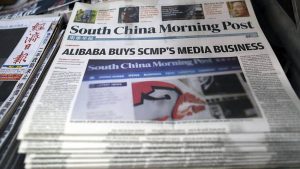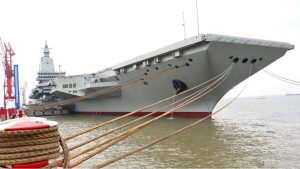
Red Sea Shipping Disruptions Trigger Global Supply Chain Concerns

The Red Sea, a critical route for shipping goods between Asia and Europe, is facing increased turmoil due to political unrest, prompting global shippers to reevaluate their supply chains. The escalation of hostilities in the Middle East, particularly attacks by Yemen-based Houthi militants, has led to a surge in costly diversions and disruptions.
Peter Tirschwell, Vice President for Maritime & Trade at S&P Global Market Intelligence, notes that the shipping industry must adjust to longer transit times, impacting supply chains globally. The Red Sea and Suez Canal route, vital for trade between Asia and Europe, has seen a rise in risk since November, forcing approximately 90% of container ships to divert from the crucial trade route.
Major shipping companies, including Denmark’s AP Moller-Maersk and Germany’s Hapag-Lloyd, are opting to avoid the route altogether. Ships that traditionally passed through the Red Sea are now either staying in safer waters or taking longer routes, such as around the Cape of Good Hope, contributing to increased shipping times by up to two weeks.
This redirection has led to rising ocean freight rates, with the Shanghai Containerized Freight Index doubling since mid-December. The disruptions are not only affecting shipping but are also causing a ripple effect in global manufacturing. Companies like Tesla and Volvo Car have suspended production in Europe due to component shortages resulting from rerouted ships.
Approximately 70% of components in the European automotive sector imported from Asia pass through the Red Sea. Suzuki Motor, a Japanese automaker, also faced production suspension due to delays in the delivery of essential parts. Various sectors in Spain are experiencing supply difficulties, prompting advance orders for raw materials.
The extended sailing times and redirection of ships have caused temporary shortages of ships and containers, leading to delays not only from Asia to Europe but also between China and Southeast Asia. Air freight rates are also on the rise as companies seek faster alternatives to ocean freight.
Despite the disruptions, some shipping companies are continuing their journeys through the Red Sea under enhanced security measures. French shipping group CMA CGM, for instance, is sailing through the troubled waters with the protection of the French navy.
However, experts warn that the situation poses long-term risks to global supply chains, prompting the European Union and Asian countries like Singapore to consider deploying ships to the Red Sea to protect commercial vessels. Tirschwell emphasizes the increased risk in long-distance supply chains due to various factors like geopolitics, public health, and climate, urging companies to engage in strategic decision-making beyond short-term adjustments.
As tensions persist in the region, the shipping industry braces for further challenges, emphasizing the need for proactive measures to navigate an evolving geopolitical landscape.














Comments